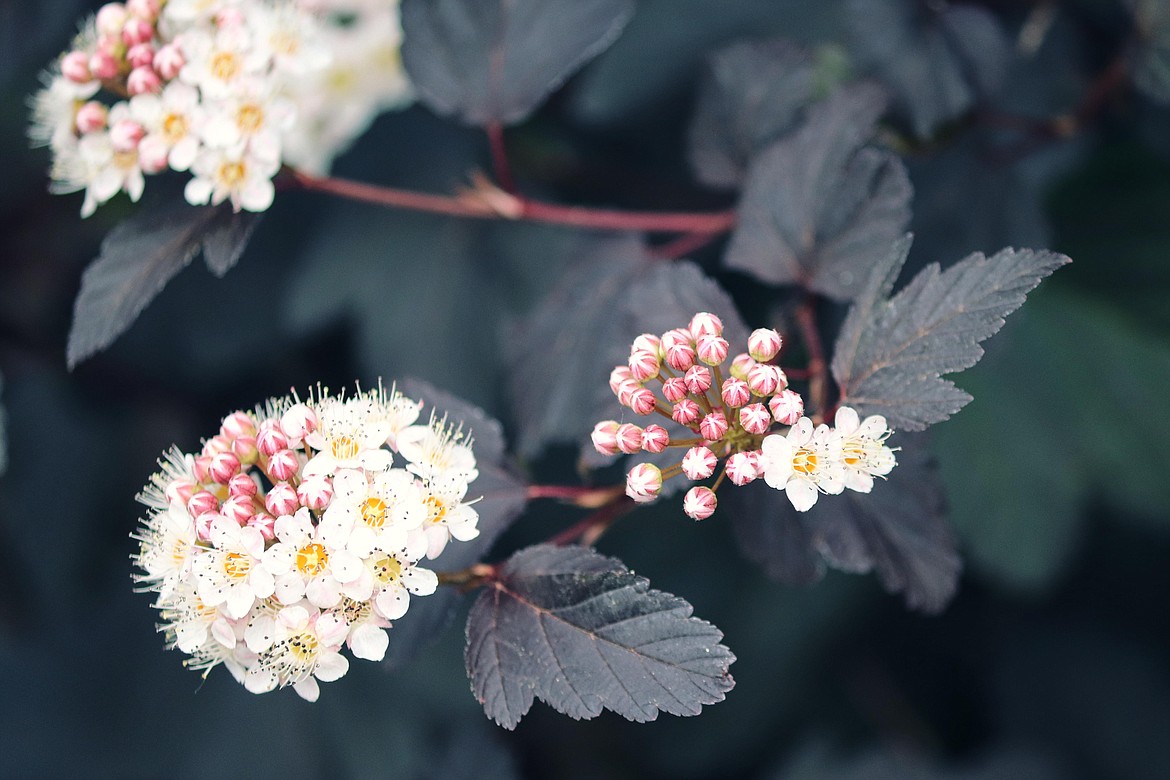Ninebark often a useful addition to landscaping
A hardy, deciduous shrub common in forests and woodlands east of the Cascade mountains in the Inter-mountain west of the United States and Canada. Ninebark (Physocarpus malvaceus), like a cat, may have nine lives. On older stems, the distinctive, cinnamon-colored bark peels off in uneven strips, in as many as nine layers, it has been said.
Another feature contributing to its longevity is its ability to survive wildfire. Often called a “rootcrown shrub,” Ninebark develops rhizomes, partially or completely buried in the soil where it grows. These buried rootcrowns produce tender sprouts for up to three years after a fire providing early feed for animals. As Ninebark matures, developing a coarser texture, it becomes less attractive to browsing wildlife. Other shrubs returning to the understory, such as ceanothus, spirea, snowberry and serviceberry are preferred.
In a garden setting, this sun-loving, drought-tolerant shrub grows up to 6-7 feet high with arching stems. It benefits from pruning to create a more dense and evenly shaped bush. Trim back as much as one-third after its May-June flowering but before August to ensure blossoms the following season.
Leaves are deep green, similar to a maple leaf, but more lobed than pointed. Round, dense clusters of small, white flowers with stamens that extend beyond the ring of petals appear like fluzzy balls on the ends of the leafed stems. Attractive to bees and butterflies, Ninebark is a great choice in a pollinator garden or dry soil area.
Planted in clusters or rows, Ninebark can form dense thickets which provide cover for wildlife. It is also good for screening, windbreaks and re-vegetation of disturbed areas. This member of the rose family isn't picky when it comes to soil type – including dry and rocky. The spring bloom is notable and fall brings rich rusty brown color.
Ninebark is at home in the dry rock habitat in the North Idaho Native Plant Arboretum, 611 S Ella Ave. A description is found on page 91 of the KNPS publication, "Landscaping with Native Plants in the Idaho Panhandle", available at local bookstores and the Bonner County History Museum.
Native Plant Notes are created by the Kinnikinnick Native Plant Society. To learn more about KNPS and the North Idaho Native Plant Arboretum, visit www.nativeplantsociety.org.

